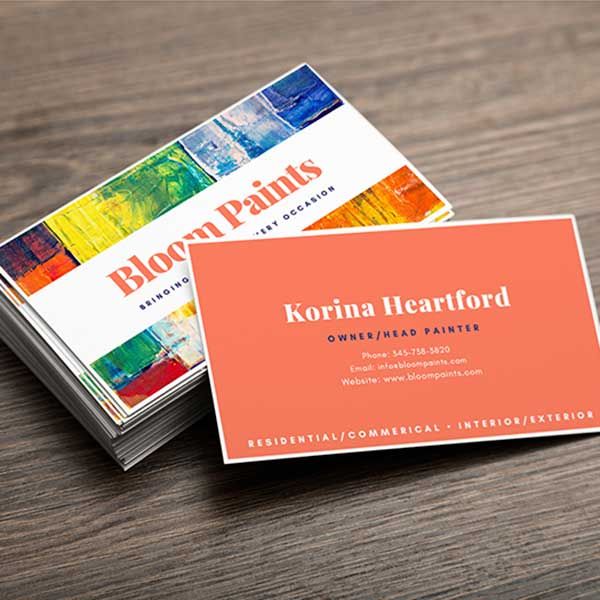
Your Pocket-sized Marketing Tool
Table of Contents
Introduction to Business Cards
In today’s digital age, where connections are often made through screens and keyboards, the humble business card remains a tangible symbol of professionalism and networking. Despite the rise of digital alternatives, business https://commonlawblog.com/ cards continue to play a vital role in making memorable first impressions and facilitating face-to-face interactions. From entrepreneurs to established corporations, everyone can benefit from having a well-designed and strategically utilized business card.
Importance of Business Cards
Business cards serve as a physical representation of your brand identity, providing essential contact information and conveying the essence of your business in a compact format. They serve as a tangible reminder of a meeting or conversation, making it easier for potential clients or partners to reach out to you when needed. Moreover, exchanging business cards establishes a personal connection, fostering trust and credibility in professional relationships.
Evolution of Business Cards
The concept of business cards dates back centuries, with roots in 15th-century China and 17th-century Europe. Initially used by aristocrats and merchants to announce their arrival, business cards evolved into a tool for networking and self-promotion during the Industrial Revolution. Over time, advancements in printing technology and design have transformed business cards into sophisticated marketing assets, capable of leaving a lasting impression on recipients.
Designing Effective Business Cards
The effectiveness of a business card hinges on its design and content. A well-designed card should not only convey essential information but also reflect the personality and values of your brand. Here are some key elements to consider when designing your business card:
Elements of a Good Business Card
- Clear and Legible Information: Ensure that your name, job title, company name, and contact details are easy to read.
- Branding Elements: Incorporate your logo, colors, and brand imagery to maintain consistency with your other marketing materials.
- Whitespace: Use whitespace strategically to enhance readability and focus attention on key elements.
- Unique Features: Consider incorporating unique finishes, such as embossing or foil stamping, to make your card stand out.
Tips for Designing Memorable Cards
- Keep It Simple: Avoid cluttering your card with unnecessary information or design elements.
- Use High-Quality Materials: Opt for durable materials that convey professionalism and quality.
- Experiment with Shapes and Sizes: Explore non-traditional shapes and sizes to make your card more memorable.
- Include a Call to Action: Encourage recipients to take action, such as visiting your website or following you on social media.
Printing Options and Materials
The printing process and choice of materials can significantly impact the look and feel of your business card. Understanding your options can help you create a card that aligns with your brand identity and budget.
Printing Techniques
- Offset Printing: Ideal for large quantities, offset printing offers high-quality results with vibrant colors and sharp details.
- Digital Printing: Suitable for small runs and quick turnaround times, digital printing allows for customization and variable data printing.
- Letterpress: Known for its tactile quality, letterpress printing creates impressions by pressing ink into the paper, resulting in a unique and luxurious finish.
- Thermography: This cost-effective alternative to engraving uses heat to create raised text and designs, adding texture and visual interest to your card.
Choosing the Right Materials
- Paper Stock: Select a paper stock that reflects the image you want to convey, whether it’s sleek and professional or rustic and eco-friendly.
- Finishes: Consider finishes such as matte, gloss, or satin to enhance the look and feel of your card.
- Specialty Materials: Explore unconventional materials like metal, wood, or plastic for a truly unique and memorable business card.
Using Business Cards Effectively
While having a well-designed business card is important, how you use it can make all the difference in establishing meaningful connections and driving business growth.
Networking Strategies
- Be Strategic: Hand out your business cards selectively to individuals who are likely to benefit from your products or services.
- Personalize Your Approach: Take the time to engage in meaningful conversations before exchanging business cards to establish a genuine connection.
- Follow Up: Use business cards as a conversation starter and follow up with personalized messages or invitations to connect on social media.
Leveraging Business Cards for Marketing
- Include a QR Code: Drive traffic to your website or landing page by including a QR code on your business card.
- Offer a Discount or Promotion: Encourage recipients to take action by offering a special discount or promotion exclusive to cardholders.
- Use Both Sides of the Card: Maximize space by including additional information, such as testimonials or product offerings, on the back of your business card.
Digital Business Cards
In recent years, digital business cards have emerged as a convenient and eco-friendly alternative to traditional paper cards. While digital cards offer advantages such as easy sharing and updating, they also come with their own set of challenges.
Advantages and Disadvantages
- Advantages: Digital business cards can be easily shared via email or social media, eliminating the need for physical exchange. They also allow for real-time updates and analytics tracking.
- Disadvantages: Digital cards may not leave a lasting impression compared to their physical counterparts. They also rely on technology and internet connectivity, which may be a barrier in certain situations.
Tools for Creating Digital Business Cards
- Mobile Apps: Platforms like LinkedIn and Adobe Scan offer mobile apps for creating and sharing digital business cards on the go.
- Online Services: Websites such as Canva and Vistaprint provide customizable templates for designing digital business cards that can be shared via email or social media.


